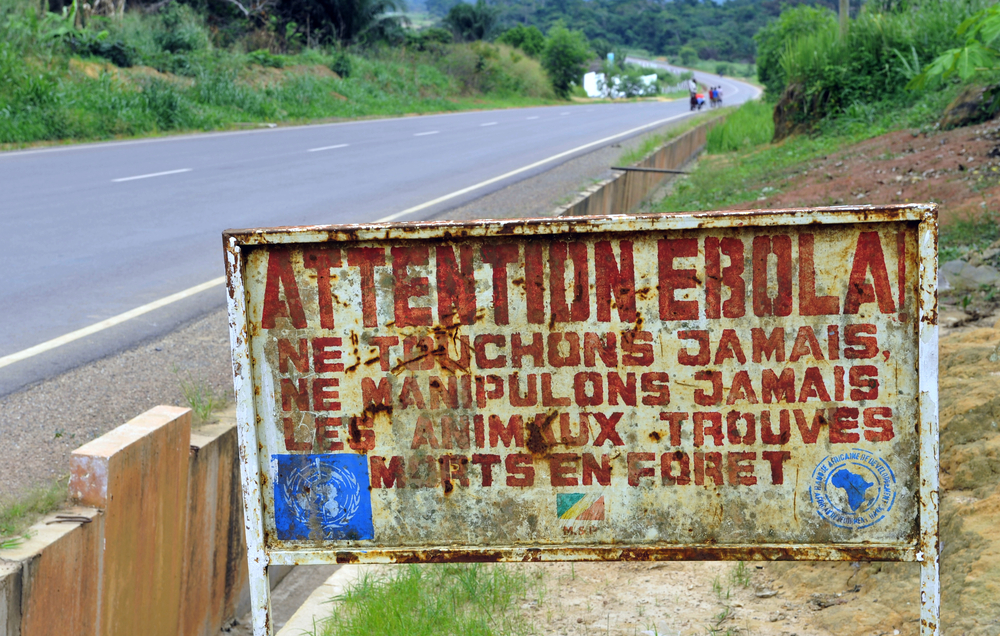The Ebola epidemic in West Africa from 2013 to 2016 left more than 11,000 dead and panicked the American public when a few isolated cases turned up on U.S. soil. By the time the outbreak was contained, the international community had learned valuable lessons about how to combat the virus.
Now, a new outbreak in the Democratic Republic of the Congo (DRC) is testing that knowledge — and the political will of the global community to mount a robust response.
With more than 830 deaths since August 2018, the epidemic in northeastern DRC is the second-largest recorded, behind the multi-country epidemic in West Africa. The DRC outbreak has not yet crossed international borders. Moreover, responders are applying new solutions, including a vaccine that has proved effective.
But many health experts argue that the threat is underestimated, leading to a dangerously inadequate global response.
As of late March, the World Health Organization (WHO) had received less than half of its $148 million funding request for Ebola over the next six months. The WHO bureaucracy, moreover, appears hesitant. On April 12, the agency again declined to declare the epidemic a “public health emergency of international concern” — a designation that could unlock critical resources needed to bring the outbreak under control.
One reason for the tepid response may be the remote location. The DRC epidemic is centered more than 1,000 miles from the capital, Kinshasa. In West Africa, by contrast, three coastal countries were affected, including capital cities with direct air links to Europe and North America.
Nonetheless, the threat of spread beyond the DRC worries health experts. Tens of thousands of people a day cross the borders from the area into Rwanda, Uganda, and South Sudan. Indeed, WHO’s statement expressed “deep concern” about the “potential risk of spread to neighboring countries.”
The response to the epidemic does show that important lessons have been learned from West Africa and from other previous outbreaks. The DRC Health Ministry has gained experience from nine outbreaks in that country since 1976, all of which were contained relatively quickly.
There is also new leadership at WHO: Dr. Tedros Ghebreyesus, the agency’s first African director, took office in 2017. Researchers, notably at the U.S. Centers for Disease Control and Prevention (CDC), have honed containment procedures and developed a new vaccine that is being used in the DRC. The CDC has worked with other international agencies and with national health ministries in training and preparing for a rapid response.
At a March 14 hearing of the Senate Appropriations Subcommittee, CDC director Dr. Robert Redfield laid out the measures being taken. Essential steps to contain further spread include tracing the personal contacts of Ebola cases and checking the health of border crossers. Multiple actors are collaborating, including local health workers, WHO and CDC personnel, and nongovernmental organizations such as the Red Cross and Doctors without Borders. Nonetheless, the outbreak has not yet been contained.
One obstacle, which also existed in West Africa, is lack of trust by local people whose cooperation is essential for timely identification of victims and their contacts. Medical procedures required to treat those infected with Ebola, and for handling the dead, frighten and alienate many people.
In West Africa, health workers and community mobilizers gradually won people’s confidence. The situation in eastern Congo is more difficult, in part because of ongoing conflict that’s displaced almost 1.5 million people from their homes. Health teams face the threat of attack by multiple armed groups and by local people who fear outsiders.
Doctors without Borders (MSF), which saw one of its health centers destroyed in February, has criticized WHO’s failure to declare a global health emergency. In an April 12 press release, an MSF spokesperson emphasized that “the outbreak is not under control.” The group called for a change of strategy: “We need to adapt our intervention to the needs and expectations of the population, to integrate Ebola activities in the local healthcare system, [and] to engage effectively with the communities.”
The other major obstacle is inadequate funding—for national health systems in the most vulnerable countries, but also for the global institutions that provide technical support and resources.
Although this underfunding is longstanding, the Trump administration’s policies are making it worse. If Trump’s budget proposal for the 2020 fiscal year were to be enacted, global health funding would be slashed. That budget zeroes out U.S. funding for UNICEF, cuts U.S. contributions to WHO by 47 percent, and proposes a $1.3 billion (20 percent) cut from the $6.6 billion current budget of the CDC.
Fortunately, there’s bipartisan support in Congress for sustaining, and even increasing, funding for global health. “I consider this every bit as much of a defense budget as anything at [the U.S. Department of Defense],” said Rep. Tom Cole of Oklahoma, ranking Republican on the Labor and Health Subcommittee of the House Appropriations Committee. “We’re much more likely to die in pandemics than in terrorist attacks.”
As in the case of climate change, action on global health is increasingly recognized not just as a moral obligation, but as a matter of national self-interest. The scientific and public consensus is illustrated by a March 4 letter from 225 professional organizations endorsing a $1.2 billion increase over current funding levels for the CDC.
On this front, at least, Congress seems inclined to heed science rather than the administration’s indifference.

